

Unique things and unusual places to discover in Japan off the beaten path. An introduction to ‘An Offbeat Guide to Japan. Tokyo Stories’ will take you on a journey through the country’s hidden gems and the wonders of the city once known as Edo
It has become very fashionable to visit Japan and wonder (some would say gawp) at its landscapes, dense urban environments, food and culture. Assuming that we celebrate the unknown, unusual and exclusive here, this is the last thing our readers want to hear. Popularity kills authentic experiences; once something is known and exploited, it is impossible for it to regain its status as unique and only for those seeking the less-travelled paths. But fear not, dear readers. In this ‘An Offbeat Guide to Japan. Tokyo Stories’ series, we will provide exclusive perspectives on the city formerly known as Edo. There’s still much to learn and be inspired by in this captivating place.
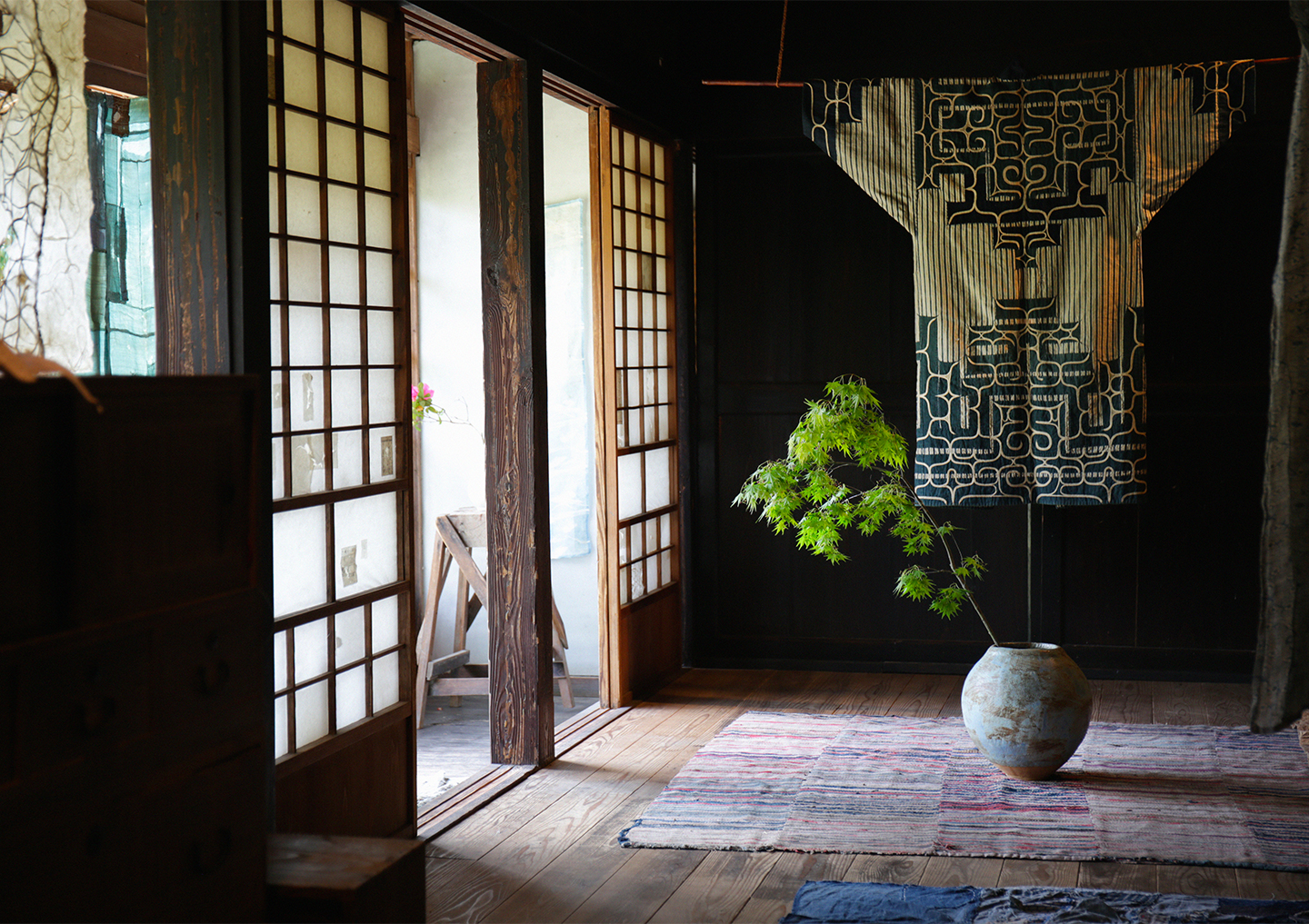
Discover Old Industrial, a Japanese antique textile collective founded by a husband-and-wife team in the countryside just outside Tokyo. This is the first topic featured in the new series for Maze35 – ‘An Offbeat Guide to Japan. Tokyo Stories’. © photo: Nick Clements
However, before we embark on our journey, let’s consider what makes Japan different and alluring to outsiders.
Unique in Asia as the first industrial superpower, the island nation had been cut off from European interference throughout the Edo epoch (1610-1868). The country operated almost feudally with a military leader, called the Shogun at the top and a spiritual figurehead in the Emperor. The Shogun’s capital was Edo (now Tokyo), and the Emperor’s Kyoto. The indigenous religion is Shintoism, that is animist in its belief system and it is understood that Kami or spirits live everywhere and are present in natural and some man-made objects. Mount Fuji has powerful Kami, and such supernatural manifestations can even protect shrines.
During the Edo period, everything we imagine as Japanese was developed in food, art and crafts. In the modern-day Ueno and Asakusa areas of Tokyo was a zone set-aside for the cultural pleasures – mainly for rich young samurai. Known as the Ukiyo or ‘floating world’, it was in the Yoshiwara compound in the Edo period. Woodblock artists like Hokusai and Utamaro depicted this realm of bath houses and inns in ukiyo-e or floating world prints. Their work gave the nation an iconic colour palette, still used today. By 1868, however, Japan realised it had fallen behind in technology and military power compared to the rest of the world. This realisation led the country to significant changes during the Meiji Restoration (1868-1912), including positioning the Emperor as the constitutional monarch, forming a civilian government and initiating a period of intense industrialisation.
The end of the Meiji era was marked by Japan’s victory over the old superpower in the region, Russia, in the Russo-Japanese War (1905). Japan had emerged onto the world stage, surprising and leaving everyone in awe, especially the Americans. From 1912 to 1989, the Taisho and Showa periods marked Japan’s love of modernism, its devastation in the aftermath of WWII, and its resurgence as a technological and industrial powerhouse in the 1980s. The country is still grappling with the rapid growth that characterised the 20th century, and style has been one way to express such optimism.
We will explore some lesser-known phenomena and individuals in Tokyo with photos and texts. Each photo essay offers a glimpse of a style scene or subculture that should be experienced first-hand to truly understand its cultural resonance. Still, we have photographs, which provide a lesson in observing and understanding historical signs and traces. To gain a deeper understanding of a culture and uncover insights, you must focus on the smallest details, such as images of stylish individuals, objects of subcultural value and domestic architecture. A traveller cannot understand Italy through Milan’s magnificent Duomo or Britain through Buckingham Palace. Japan, in particular, has a wealth of unexplored nuances and customs waiting to be discovered.
Let’s explore Japan’s lesser-known and more relaxed destinations with ‘An Offbeat Guide to Japan. Tokyo Stories Ep.1: Old Industrial’
Visualizza questo post su Instagram
Old Industrial is a Japanese antique textile collective founded by a husband-and-wife team in the countryside just outside Tokyo. It is the first topic featured in a new Japan-inspired series on Maze35 – ‘An Offbeat Guide to Japan. Tokyo Stories’.
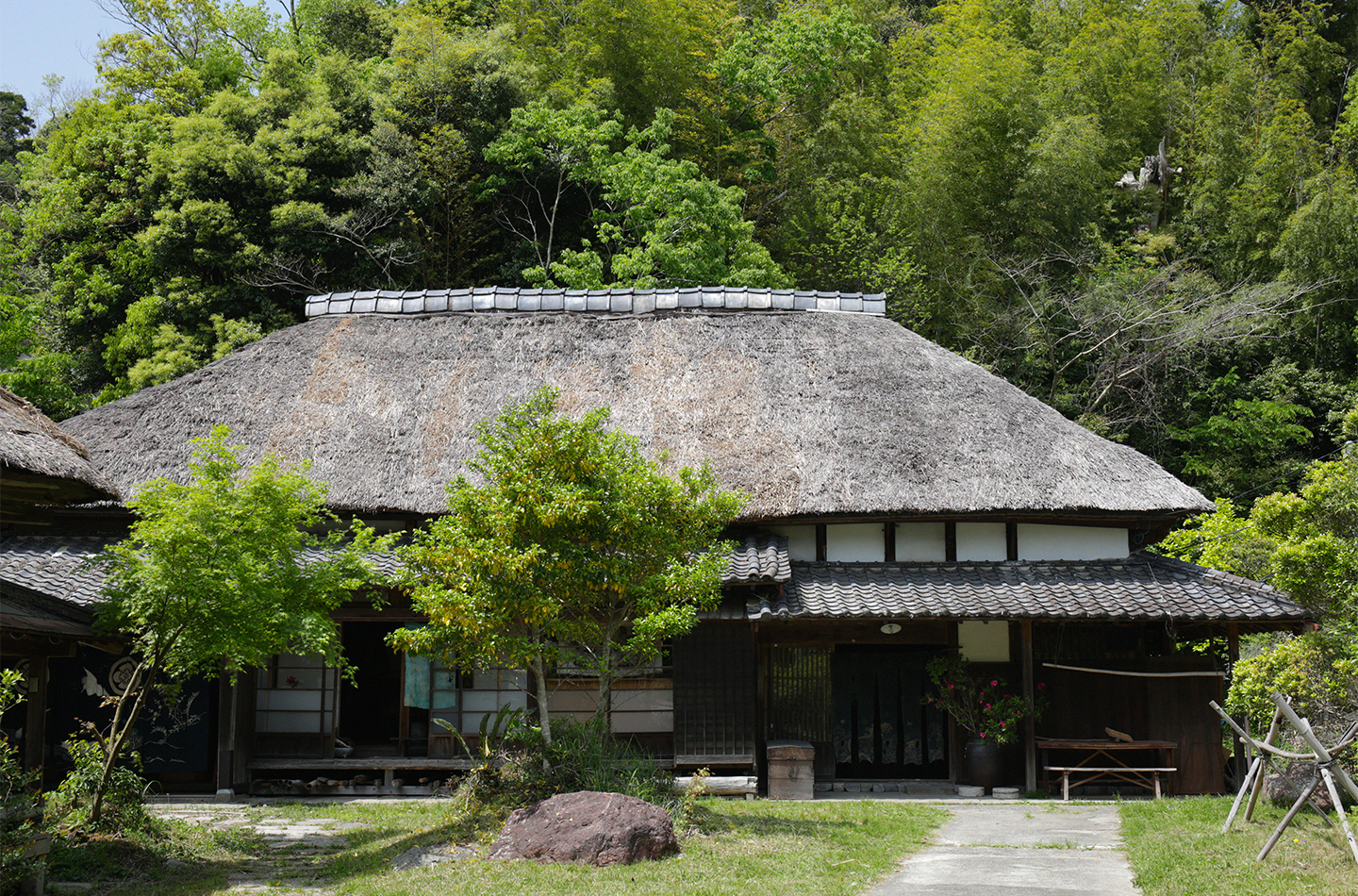
Ryuichi and Hitomi’s Edo period house, built amongst rice fields. © photo: Nick Clements
The Chiba Prefecture is on the East side of Tokyo’s vast harbour. On the bay side are natural shellfish beds, and on the open sea are deserted white sand beaches with excellent surf and cold water; Ryuichi and Hitomi’s Edo period house and rice fields are between these two geographical points, and travellers can get close to the house by taking a bus from Tokyo station, which only takes one hour.
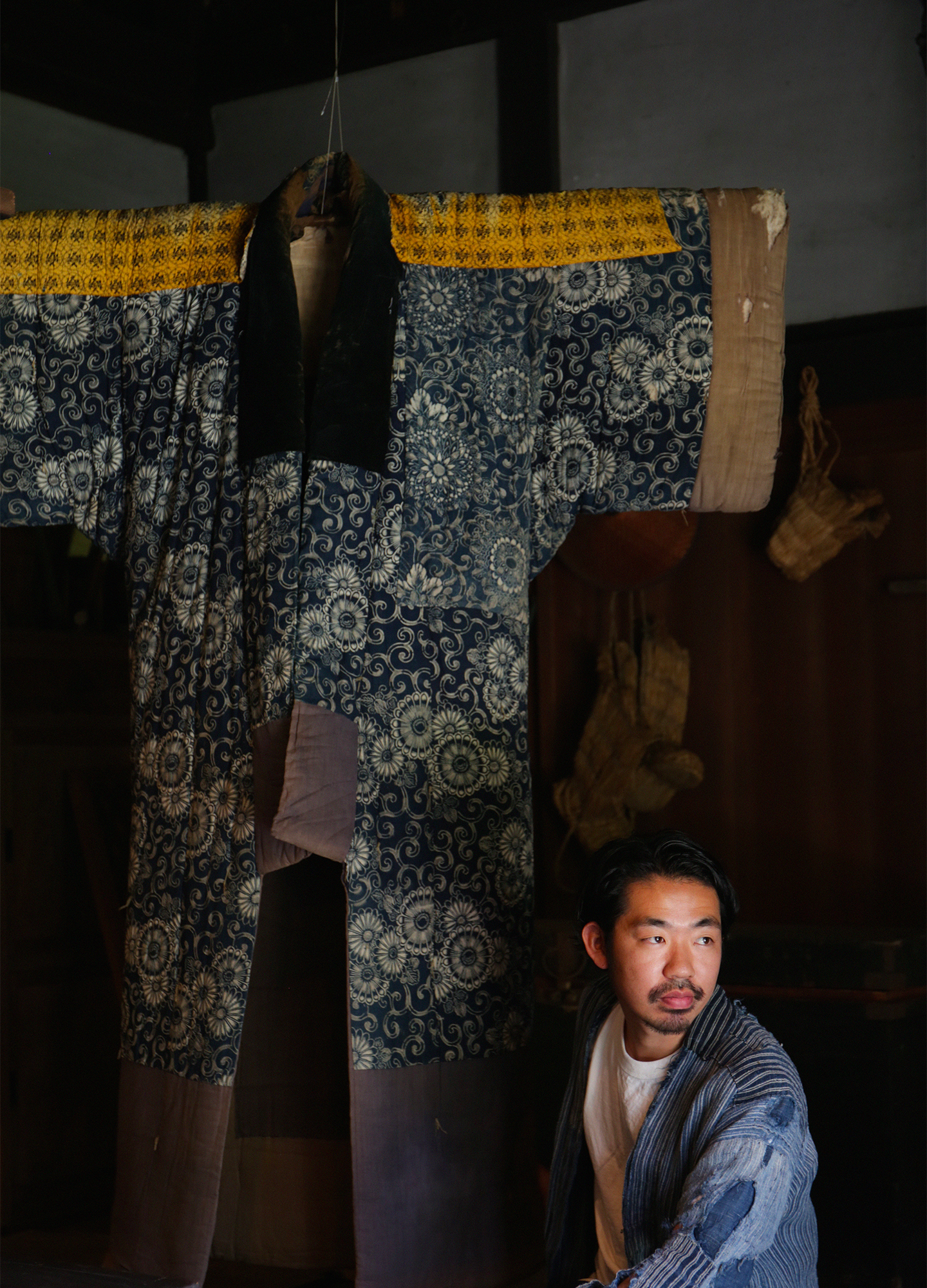
Ryuichi with Taisho period ‘beddo’ sleeping kimono. © photo: Nick Clements
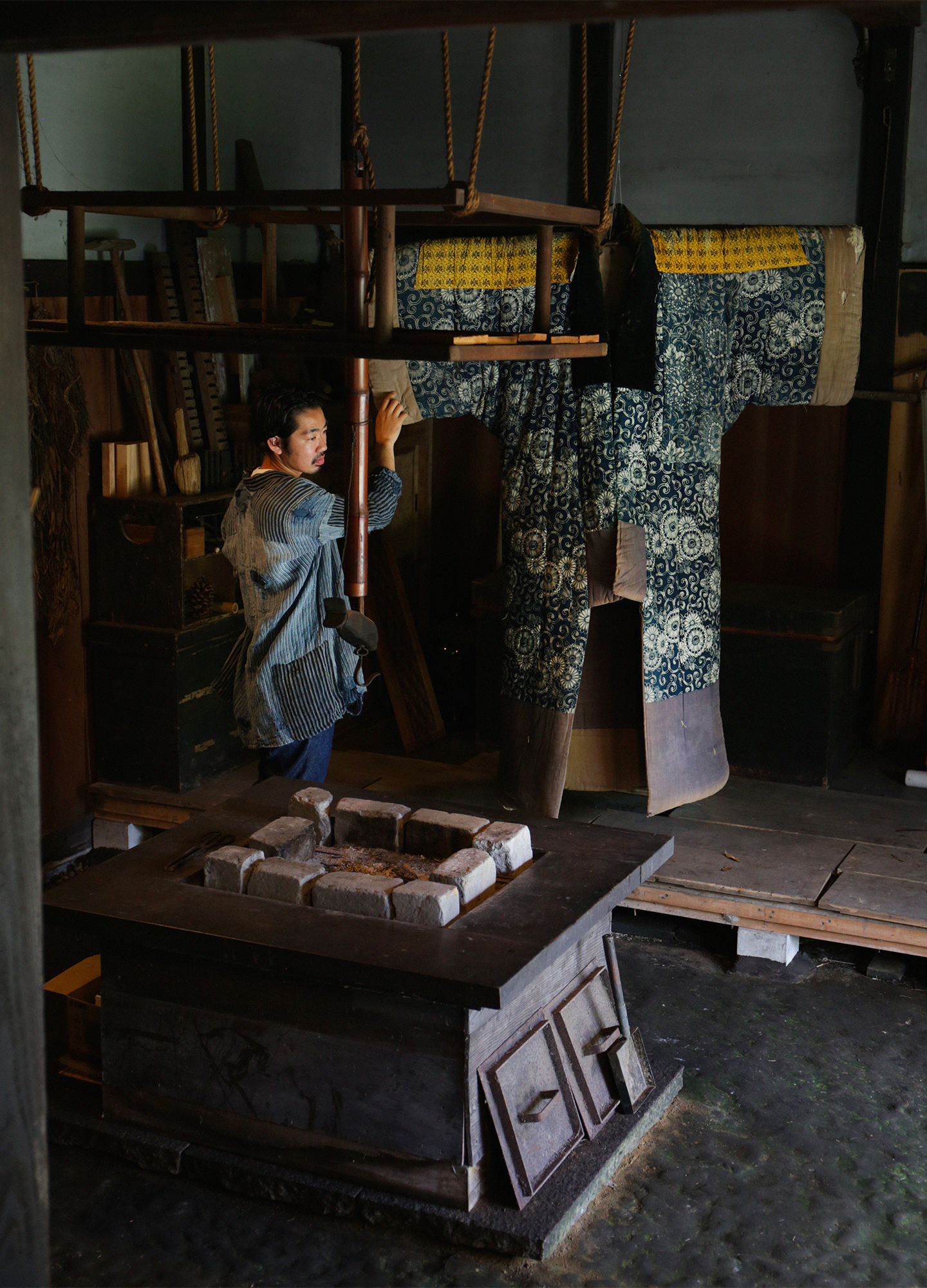
Ryuichi with Taisho period ‘beddo’ sleeping kimono. © photo: Nick Clements
These two visionaries have been collecting ancient Japanese textiles and clothing for many years and working towards restoring their 170-year-old property as a home and repository for their private collection and the stock they sell to a global market.
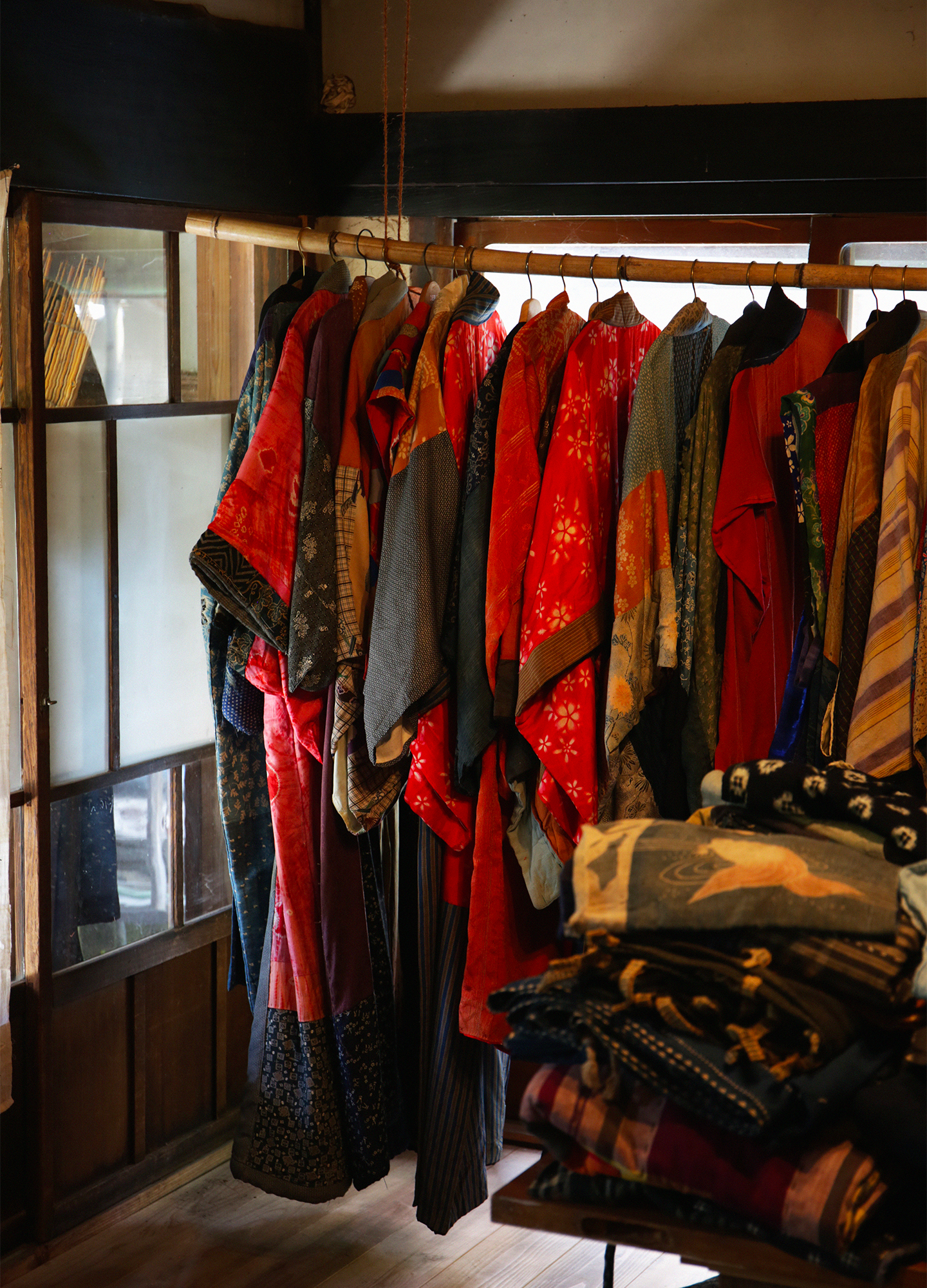
Store room filled with ancient kimonos and textiles. © photo: Nick Clements
This country has many dealers specialising in antique textiles, but nothing quite like this anywhere else in Japan. This is not a business; it’s an installation or performance art, although, for the couple who founded Old Industrial, this was not their intention. For them, this is just living with two small children among water-logged fields – where they grow enough rice to sustain themselves through the year.
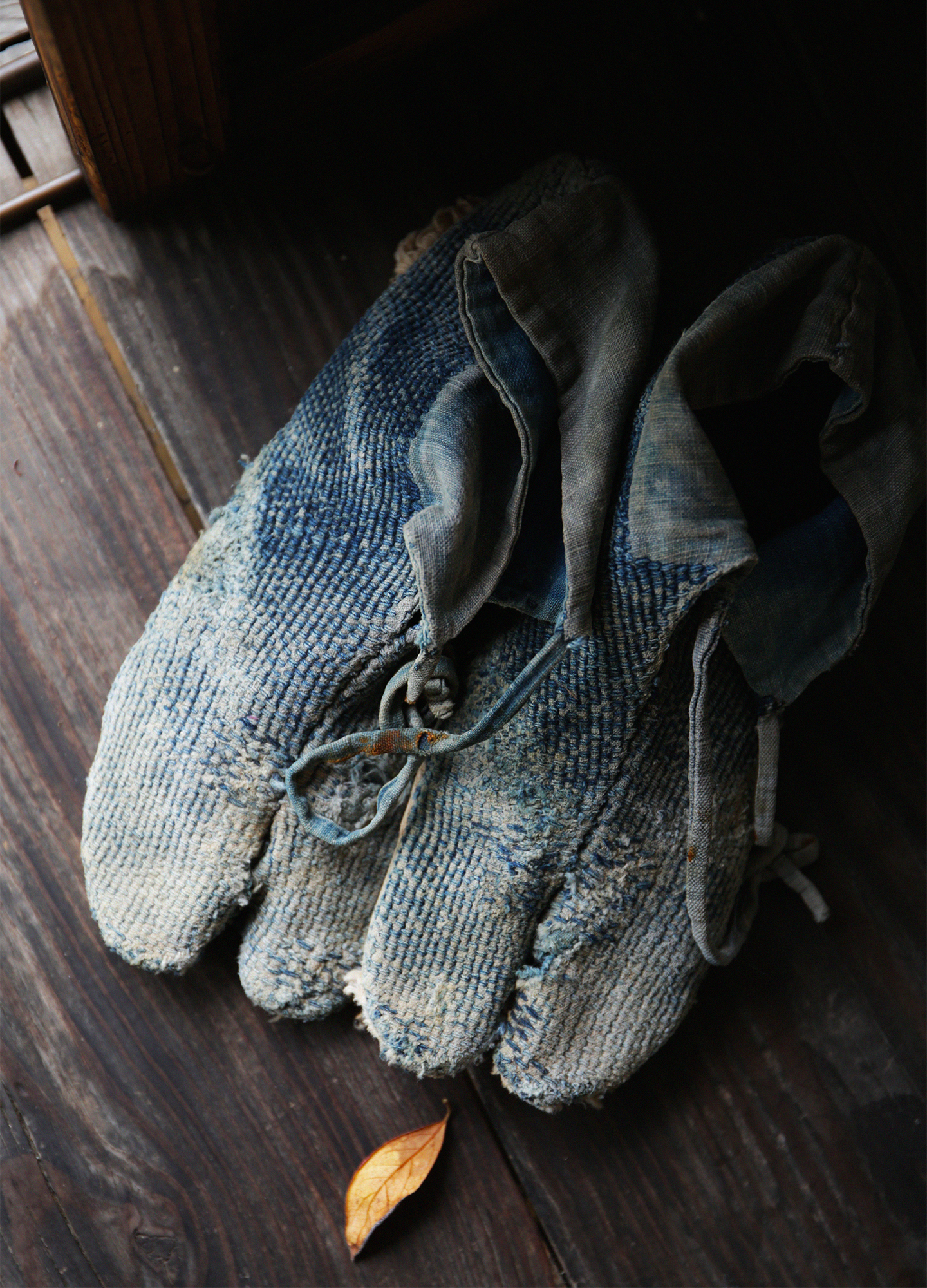
Indigo-dyed Tabi boots. © photo: Nick Clements
Akin to re-enactment culture, in which modern individuals dress up and relive the past in every part of their lives as a style statement and a form of resistance against postmodern media and consumerism, this creativity is (relatively) free from market influences and capitalism. This is style.
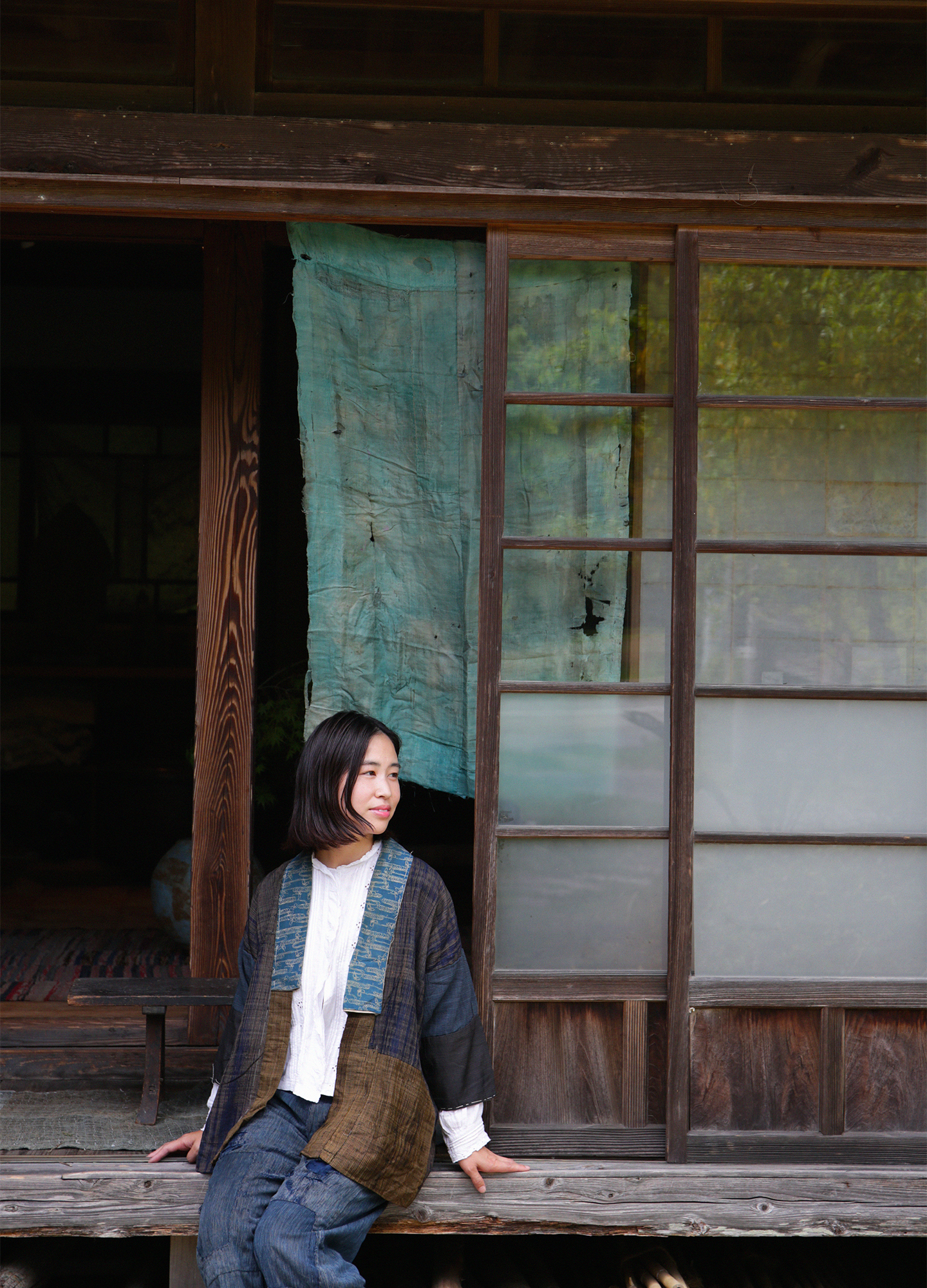
Hitomi wearing boro (patchwork repair) trousers. © photo: Nick Clements
Nick Clements
Tutor in Fashion Writing and Photographic Theory and Practice, London



